The Glen Carbon Heritage Museum is coordinated by Samantha Doolin, and focuses on preserving the local history, artifacts, and records of the village of Glen Carbon, their mission statement reading “The Glen Carbon Heritage Museum exists to collect, preserve, display, and interpret the Village’s historical artifacts and communicate the diverse heritage of the Village of Glen Carbon. The museum seeks to be a cultural and educational community-centered place for visitors of all ages to remember, discover, and learn”.

The museum was undergoing renovations and rearrangements on the date of my visit, March 21st, 2024, but was still open to the public. As such the exhibits were not in their standard configurations, so I will be restricting myself to discussing the most complete section that was available during my visit. The roughly 20×25 foot room houses a number of different exhibit sections, each focused on a different set of objects. As it currently stands the exhibit space follows an open floor format that encourages interactions with specific objects of interest rather than attempting to create a set path to be followed. I feel that with this museums focus on engaging younger audiences that this is a very wise approach to take, as it allows for a more freeform and interactive experience overall.


The two most prevalent of these sets are a collection of precolonial artifacts consisting of several dozen stone tools and hundreds of arrowheads, and a large display of coal mining equipment and other items including ledgers, photographs, lunch pails and letters detailing the industry that established the village of Glen Carbon. Pictured below are sections of these exhibits, as the displays were both too large to fit in a single shot, and the overall size of the collection too extensive to include in its entirety. I feel as though were these exhibits broken up into smaller sections or distinct displays the sheer volume would be a bit less overwhelming, but with the museum being in such a transitional phase, I was personally more than happy to see these objects on display as they were. From the brief conversation I was able to have with Mrs. Doolin, It seems as though there was not much empty space to go around.


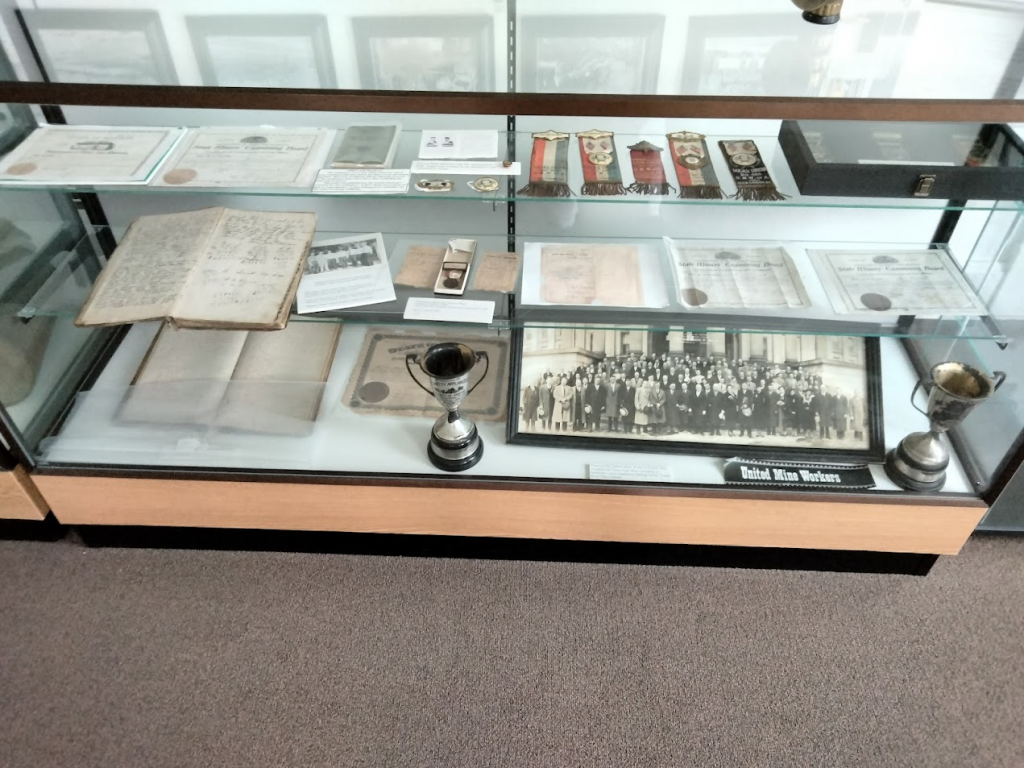

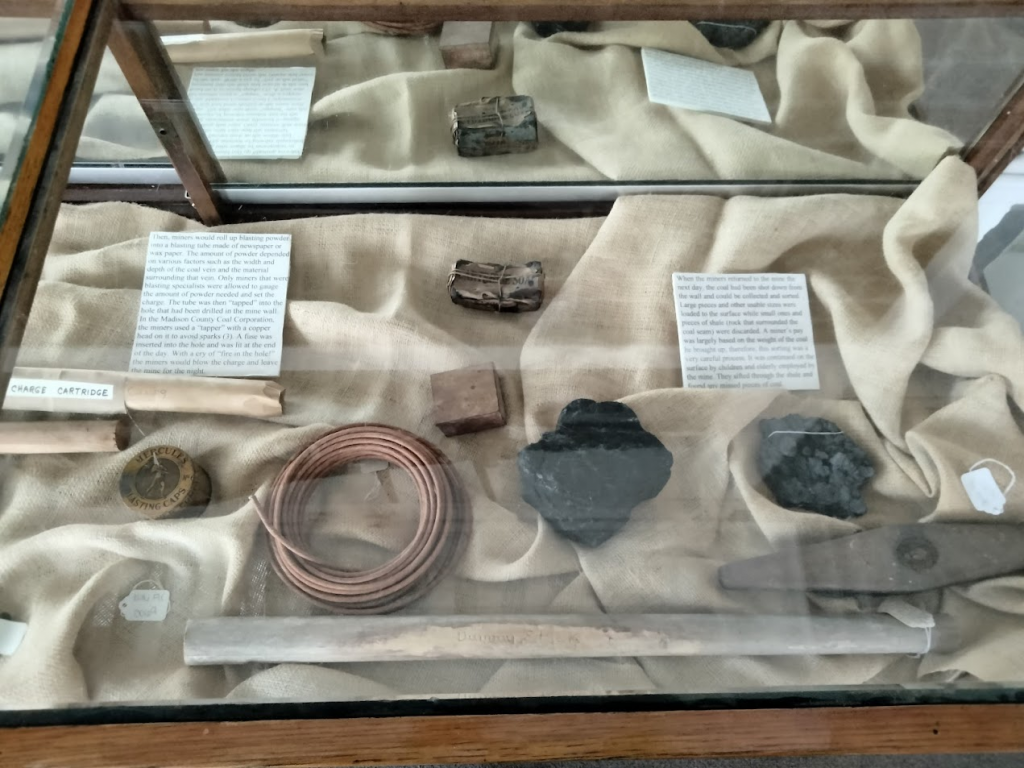
Also on display were examples of St. Louis Brick Company brick designs and surviving pieces, as well as a small exhibit on early firefighting equipment and a local fireman’s uniform that had been donated to the museum. These sections were smaller and somewhat out of place, but still proved to be quite interesting. I especially found it fascinating that the uniform was used by John “Jack” Koch, who served the Glen Carbon Fire Department for fifty years and retired in 1962. For me personally these sorts of objects and factoids are why I enjoy smaller local history museums. They are one of the few places that can follow the full life of an object, from creation, use, and retirement, as this is a resource that cannot be over stated from a research perspective. And yet researchers are only a small part of the audience that this museum seeks to attract.

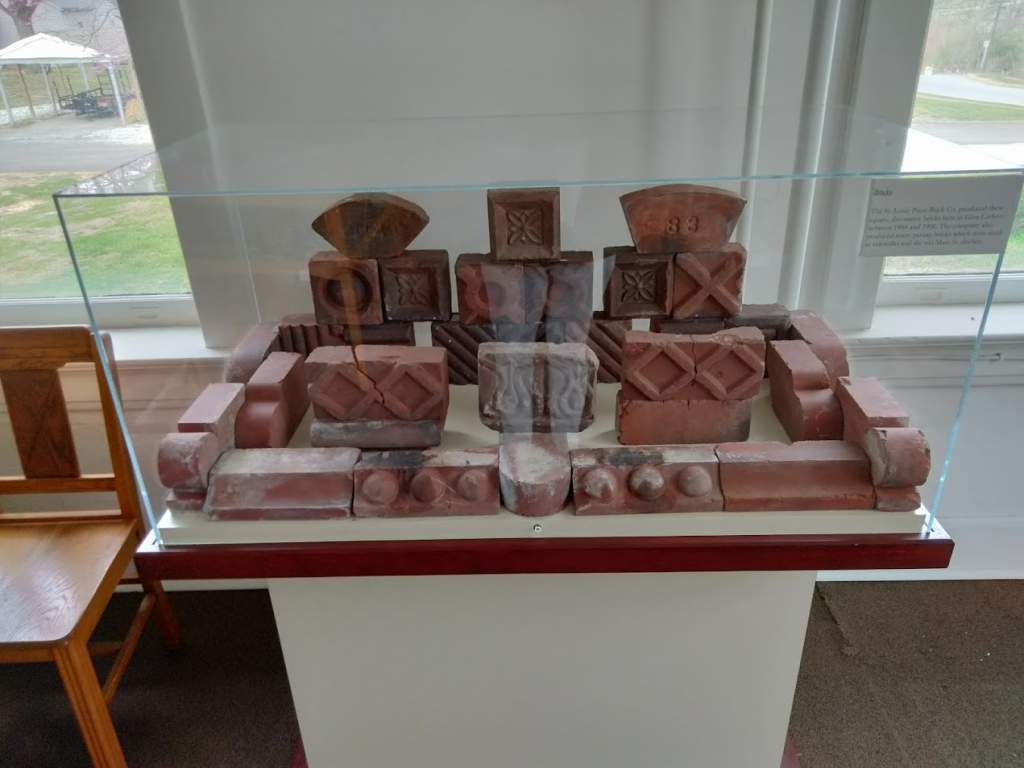

Responders Display, Pt.1, March 21, 2024

John “Jack” Koch)
The museum places a great deal of importance on engaging children and their families, having a scavenger hunt built into the different displays, as well as a number of tactile sections meant to be handled and interacted with directly whenever possible. This, combined with the freeform layout of the room, allows individuals of all ages to interact and connect with the displays at their own pace and in their own ways, which I feel is deeply important to fulfilling the spirit of the museum’s mission. Every label seemed to be constructed to allow for further exploration on an individual level, mostly containing little more than a description and date range, while there were select objects that were expounded upon further to provide context, as well as a number of freestanding text displays for those more immediately curious.

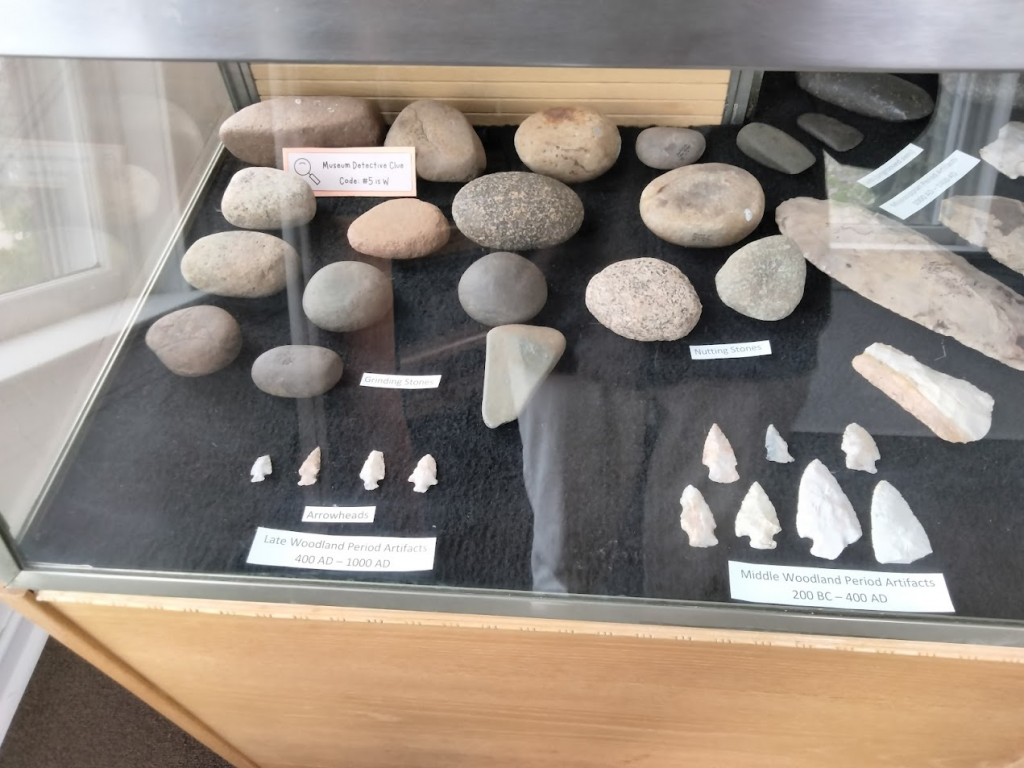
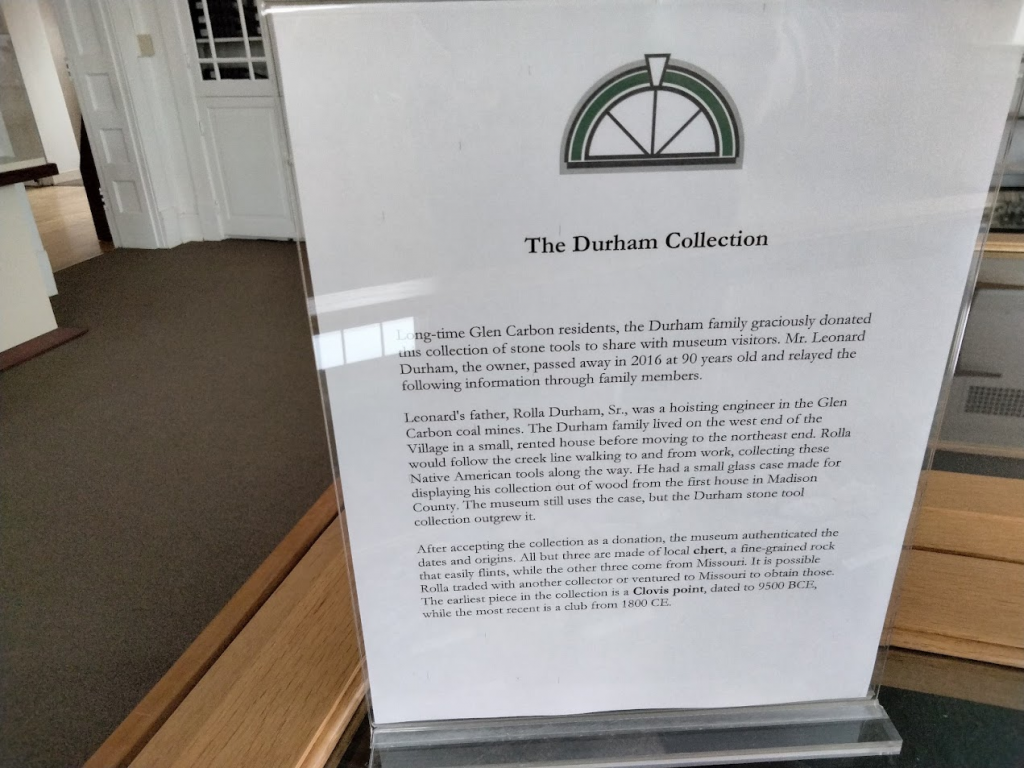
While it is currently in state of extreme transition and near constant change, I still found my most recent visit to the Glen Carbon Heritage Museum to be immensely enjoyable and informative. The displays of stone tools and mining equipment may be a bit overfull, but that in its own way points to the prevalence and importance of these aspects of local history. Glen Carbon is an area that knows its roots, in no small part due to its museum. Samantha Doolin has put in incredible amounts of work, and continues to do so. I feel as though once the museum has found a place for everything, and gains the time to steady itself and reorient from a storage point of view, it will be a resource for accessible and informative local history that is hard to beat, as even in the state it is in now it is hard to match.
Leave a Reply